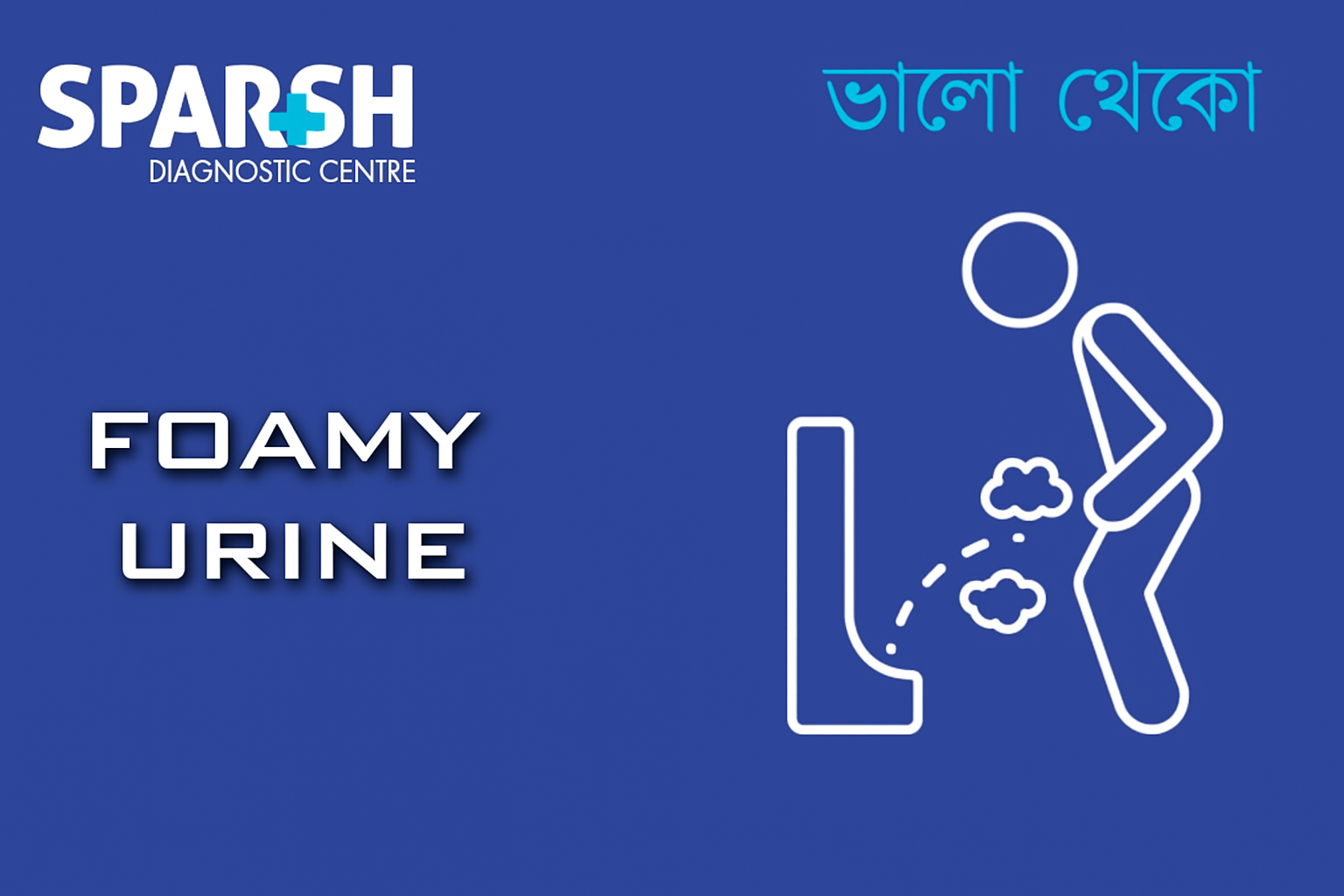Have you ever noticed bubbles or foam in your urine after using the toilet? While occasional froth is usually harmless, persistent foamy urine may be an early sign of a health problem, especially related to the kidneys. Understanding when it’s normal and when it’s a cause for concern can help you seek timely medical attention.
This blog will explain everything you need to know about foamy urine — its causes, associated symptoms, diagnosis, and treatment.
What is Foamy Urine?
Foamy urine appears bubbly or frothy, resembling the foam on beer or cold drink. While a single occurrence might be due to the force of urination or cleaning chemicals in the toilet bowl, persistent or increasing foaminess can signal underlying health issues such as protein in the urine (proteinuria) or urinary tract disorders.
How Common is Foamy Urine?
Foamy urine is relatively common, but studies suggest that persistent foaminess occurs in around 2–3% of the general population and often correlates with kidney function problems. Many people ignore it, delaying early diagnosis.
Causes of Foamy Urine
There are many reasons why urine can appear foamy. They range from harmless, temporary factors to serious medical conditions.
1. Benign Causes (Usually Temporary)
Forceful urination – A strong stream can trap air, causing foam.
Dehydration – Concentrated urine due to low water intake can appear darker and foamier.
Soap or cleaning agents – Residual chemicals in the toilet bowl can create foam when urine makes contact.
Dietary factors – High-protein meals can cause temporary protein excretion.
2. Medical Causes (Require Attention)
a) Proteinuria
Description: Excess protein leaks into the urine, causing foam.
Common in: Chronic kidney disease, diabetic nephropathy, hypertension-related kidney damage.
Why it foams: Proteins lower the surface tension of urine, trapping air bubbles.
b) Kidney Disease
Examples: Glomerulonephritis, nephrotic syndrome, chronic kidney disease.
Mechanism: Damaged filtering units in the kidney allow proteins and sometimes blood to pass into urine.
c) Urinary Tract Infections (UTIs)
Symptoms: Burning sensation, frequent urination, cloudy urine, sometimes foam.
Cause: Bacteria and white blood cells in urine can create froth.
d) Retrograde Ejaculation (in men)
Description: Semen enters the bladder instead of exiting via the penis during ejaculation.
Result: Causes foamy, cloudy urine.
e) Preeclampsia (in pregnant women)
Signs: High blood pressure, swelling, proteinuria.
Risk: May harm both mother and baby.
f) Other Causes
Medications – Certain drugs like antibiotics or chemotherapy agents may change urine consistency.
Systemic conditions – Diabetes, lupus, and amyloidosis can cause foamy urine.
When to Worry About Foamy Urine
Occasional foam is normal. But seek medical advice if you notice:
Foaminess that persists for several days or weeks
Swelling in hands, feet, face, or abdomen
Changes in urine colour (dark, tea-coloured, or blood-tinged)
Frequent urination or pain while urinating
Symptoms That May Accompany Foamy Urine
Persistent foamy urine may come with:
Diagnosis of Foamy Urine
At Sparsh Diagnostic Centre, we use a combination of laboratory and imaging tests to find the underlying cause.
1. Medical History & Physical Examination
The doctor will ask about:
Duration and frequency of foaminess
Diet and fluid intake
Any symptoms like swelling, pain, or fever
Medical history of diabetes, hypertension, kidney disorders
2. Urine Tests
Urinalysis: Checks for protein, blood, glucose, and infection.
24-hour urine protein test: Measures the total protein loss in urine over a day.
Urine albumin-to-creatinine ratio (UACR): Detects early kidney damage.
3. Blood Tests
Serum creatinine and blood urea nitrogen (BUN): Evaluate kidney function.
Estimated Glomerular Filtration Rate (eGFR): Measures how well kidneys filter waste.
Blood sugar tests: To check for diabetes.
4. Imaging
Ultrasound of kidneys and bladder – Detects structural abnormalities or blockages.
5. Special Tests
Kidney biopsy – If glomerular disease is suspected.
Cystoscopy – For urinary tract abnormalities.
Treatment for Foamy Urine
Treatment depends on the cause.
At Sparsh Diagnostic Centre, our nephrologists, urologists, and general physicians work together to tailor treatment plans.
1. For Dehydration
Increase water intake to at least 2–3 litres daily (unless restricted by a doctor).
2. For Proteinuria
Medications: ACE inhibitors or ARBs to protect kidney function.
Diet: Low-salt, moderate-protein diet.
Diabetes & BP control: Essential to slow kidney damage.
3. For UTIs
Antibiotics: Chosen based on urine culture.
Increased hydration: Helps flush bacteria.
4. For Kidney Disease
Disease-specific medications.
Regular monitoring of kidney function.
In severe cases, dialysis or kidney transplant.
5. For Retrograde Ejaculation
Medications to improve bladder neck muscle function.
In some cases, assisted reproductive techniques.
6. For Pregnancy-related Proteinuria
Close monitoring by obstetrician.
Control of blood pressure.
Timely delivery if preeclampsia risk rises.
Prevention Tips
Stay hydrated.
Limit excessive salt and processed foods.
Manage chronic conditions like diabetes and hypertension.
Avoid overuse of protein supplements.
Get regular health check-ups — especially urine and kidney function tests.
Foamy Urine in Men vs Women
Men: More likely linked to retrograde ejaculation, prostate issues, or kidney disease.
Women: Pregnancy-related proteinuria, UTIs, and hormonal changes are common causes.
Complications if Untreated
Ignoring persistent foamy urine can lead to:
Chronic kidney disease
End-stage renal failure
Hypertension
Cardiovascular problems
Complications in pregnancy
Why Early Diagnosis Matters
Kidney disease often progresses silently. By the time symptoms appear, significant damage may have occurred. Detecting and treating the cause of foamy urine early can preserve kidney function and prevent long-term health issues.
Foamy Urine & Kidney Health: Sparsh Diagnostic Centre’s Role
At Sparsh Diagnostic Centre, Bansdroni, we offer:
Advanced urine and blood testing
Ultrasound and imaging facilities
Specialist consultations with nephrologists and urologists
Preventive health packages for early kidney disease detection
Foamy urine is not always harmless. While occasional foam may result from diet or dehydration, persistent or worsening foaminess could signal serious kidney or urinary issues. Monitoring your urine and seeking timely evaluation is crucial.
If you notice persistent foamy urine, book a health check-up at Sparsh Diagnostic Centre, Bansdroni, Kolkata, today.
#BhaloTheko
Disclaimer:
No content on this site, regardless of date, should ever be used as a substitute for direct medical advice from your doctor or other qualified clinician.

![]()






[…] Difficulty urinating or foamy urine […]
[…] Foamy urine (due to protein loss) […]
[…] Foamy Urine: Indicates the presence of protein in the urine. […]
[…] Foamy urine – Due to protein leakage. […]
[…] changes – frequent urination, foamy urine, blood in […]
[…] Foamy urine: An indication of excess protein in the urine. […]